Special Exhibit
Resorts & Recreation in Cedar Lake
The Museum at Lassen’s Resort rotating exhibit room currently features highlights of summertime fun from Cedar Lake through several decades. Access to the exhibit is included with museum admission, or always free for members.
Resort History Map
Discover images and stories from Cedar Lake resorts that are lost to time.
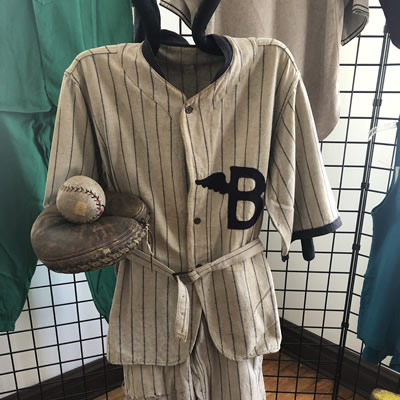
Volunteer
Do you have a background in fashion design, collections or textile care? Please consider joining our committee. Complete the Volunteer Inquiry Form today to schedule an interview.
The following information is a supplement to the exhibition. Visit today to view all the resort memorabilia on display from our archives.
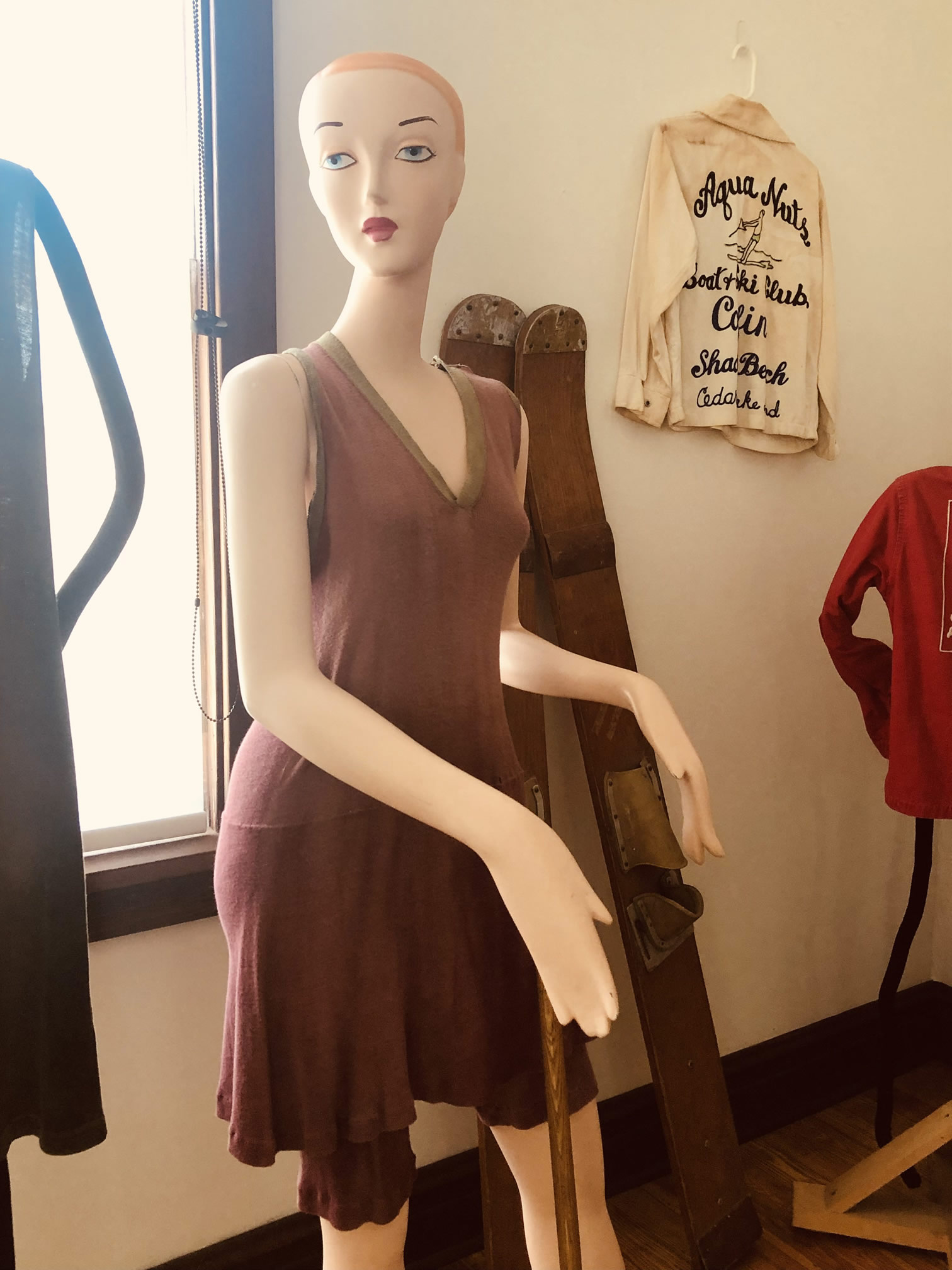

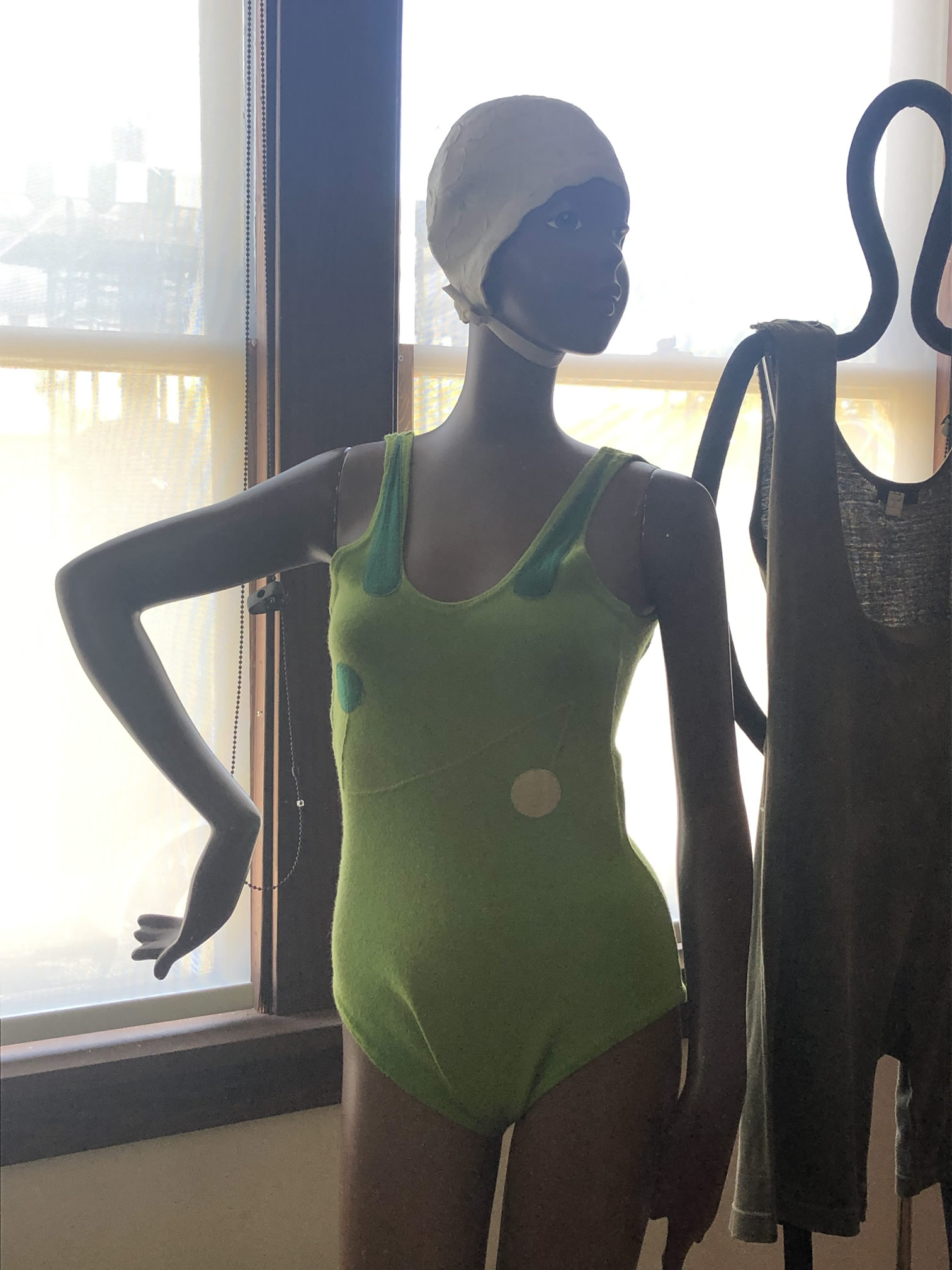
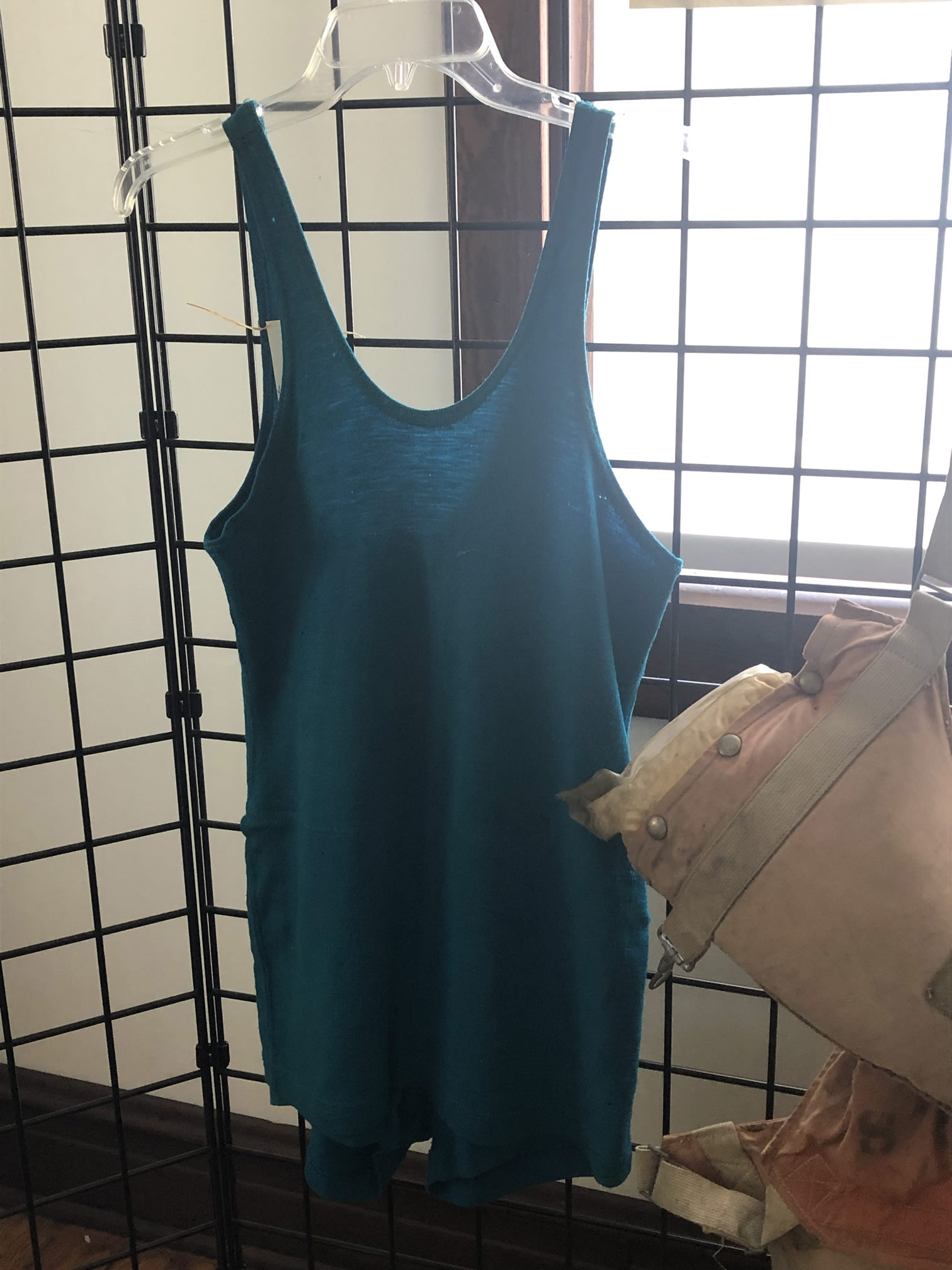
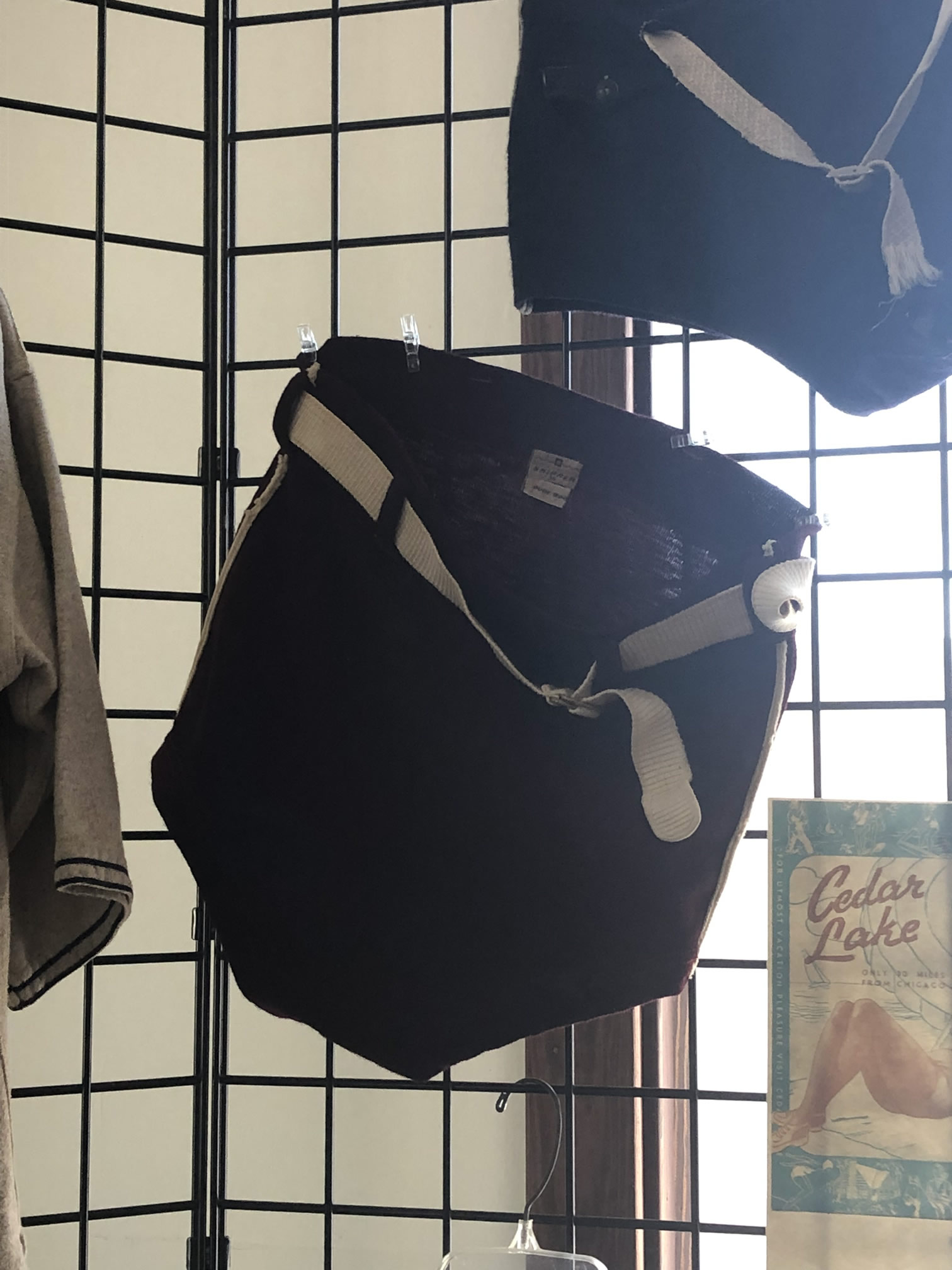
Once swimming became a common pastime, the silhouettes began to change. These first suits looked very similar from men to women. A one-piece ribbed tank style, fitted through the bodice with shorts underneath. The biggest difference being that women could be fined or even arrested if their shorts were too high. These first suits were made of all wool, which looked fine when dry but sagged terribly when wet. Textile innovations in the early 30’s made it possible to create a more comfortable suit.
“Terrific in Turquoise” In 1923, designer Jean Patou invented a dyeing process that would not fade in the sun. This made it possible to introduce more colors as well as mixing colors on one suit. The skirted style was still very popular, but the shorts were getting higher. (See grid)
By the mid 30’s, swimsuits had a new look. They were cut to show more leg, more back, and straps were thinned to make shoulders appear more broad/athletic. Colors were more vibrant and cubist shapes were added as shown here with our lime green suit. This new shape became what we now know as the modern swimsuit.
*Mannequin is also shown wearing the rubber aviator swim cap. This helped keep a girl’s bobbed hair from losing its shape.
Men continued to wear the unitard look most of the 1930’s. But by the early 40’s, the men’s suit saw the removal of the top, leaving only the briefs. These were made of worsted or rib knit wool with a built-in elastic supporter. Popular colors included Navy and Maroon, a white cotton belt and outer coin pocket. (See grid)
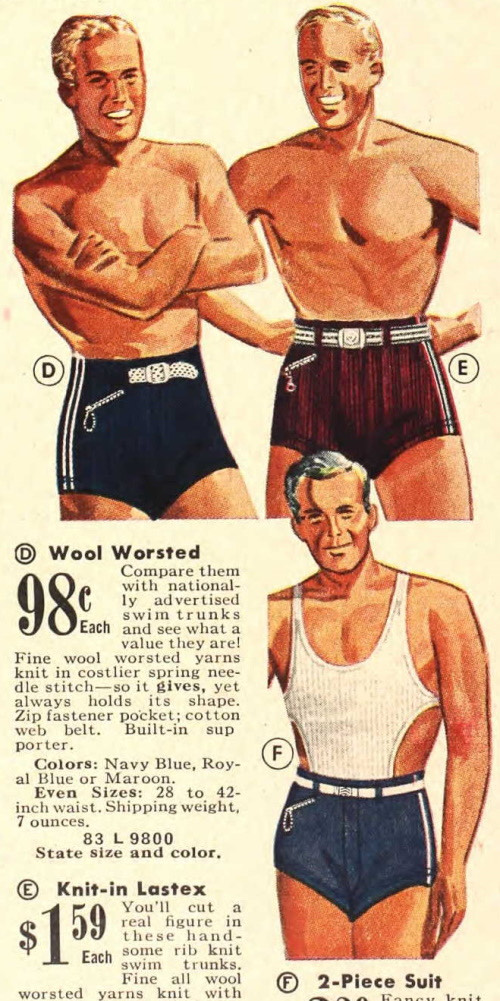
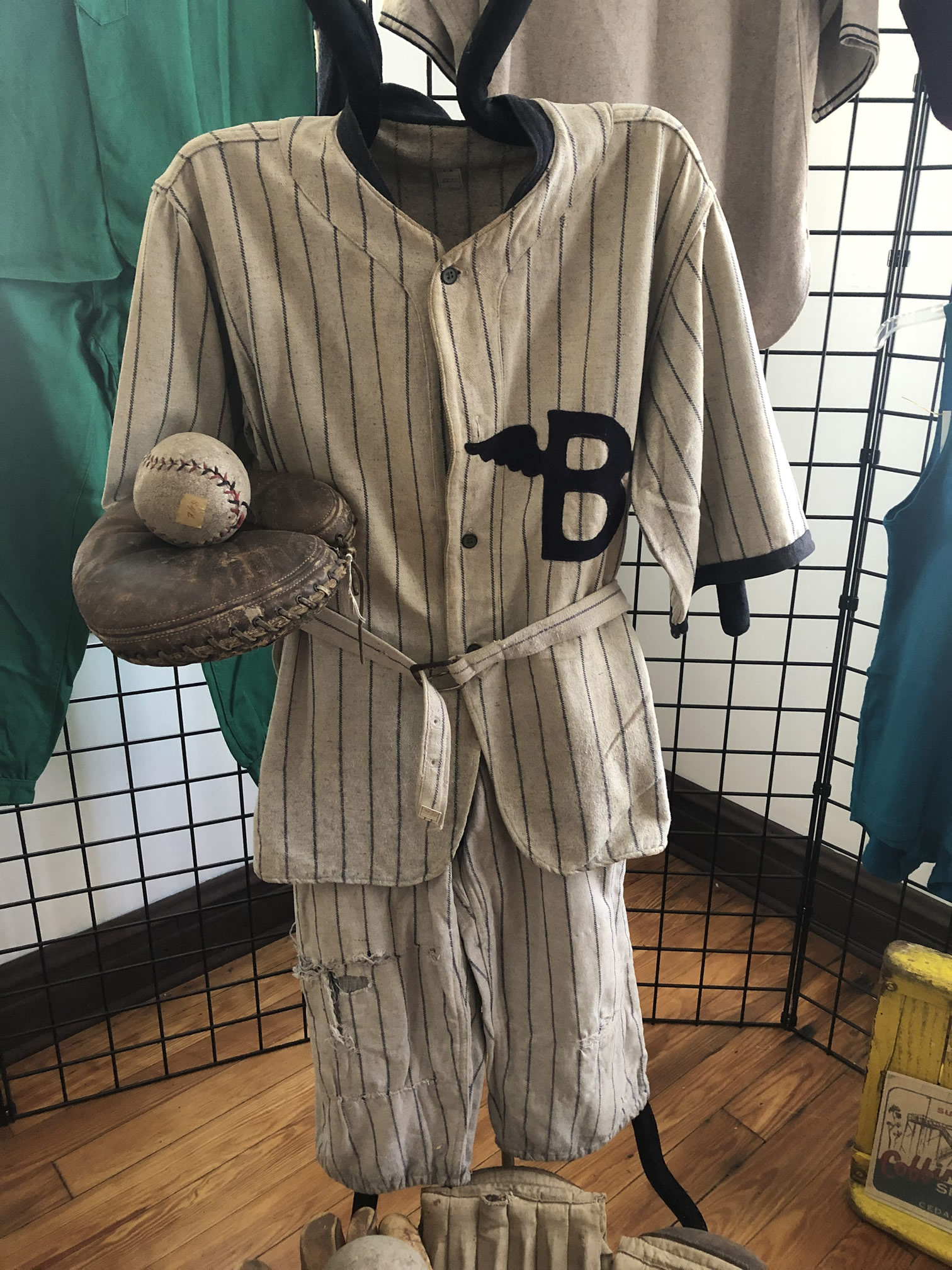
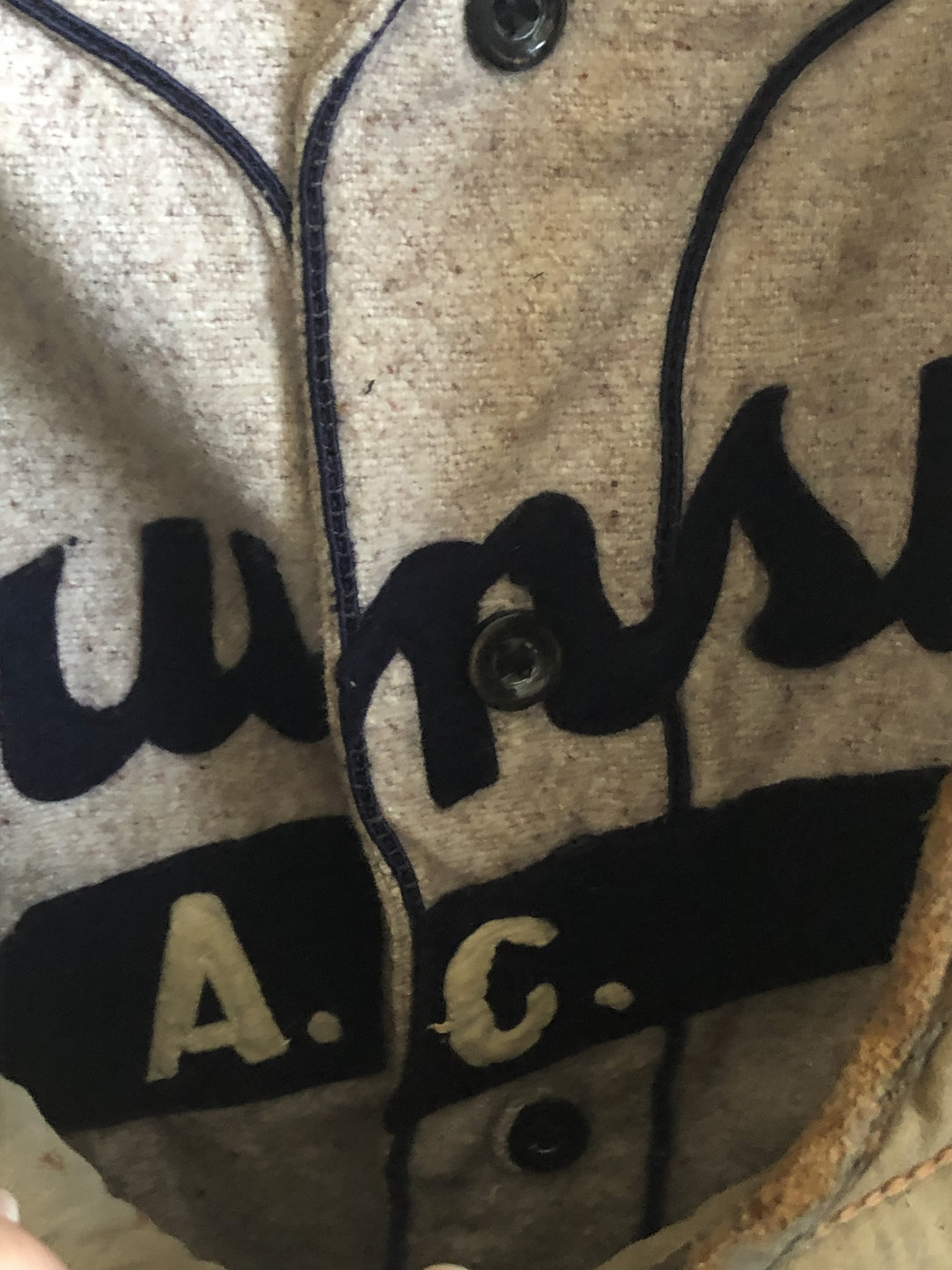

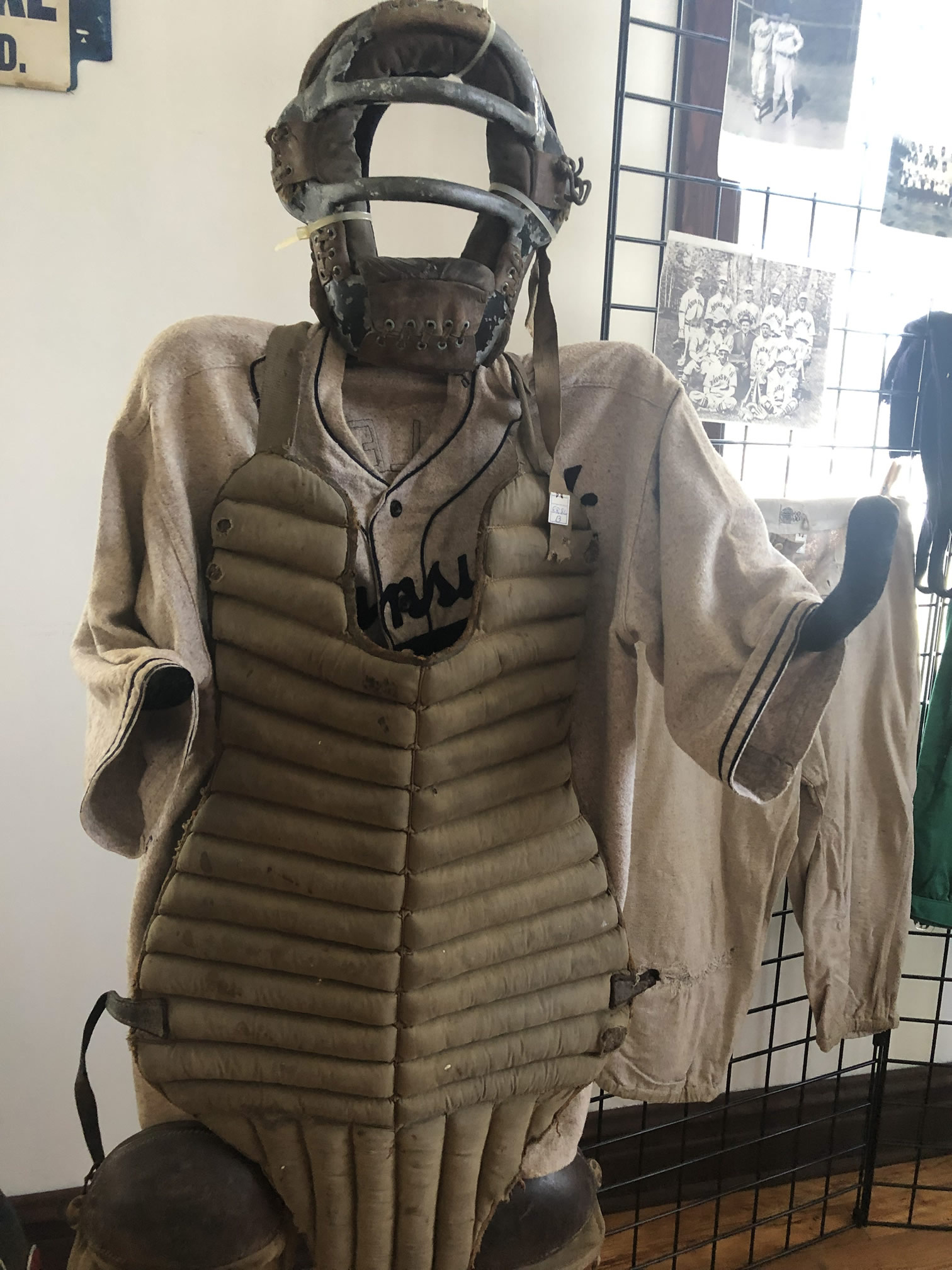

1.Pinstripes were first seen in pro baseball around 1907. Full button up jersey with navy felted sleeve hems and Suncollar, most common during the 20s/30s. Uniform made from heavy wool flannel material. Style was loose, with baggy pants that cuffed below the knee and long stockings. Button fly with plastic buttons and cotton cloth waistband. This uniform also had the “B” appliqued to the front.
2. Plain wool flannel uniform with sponsorship from local businesses on the back, popular in the 1930’s/40’s. Suncollar and full button jersey. Double stitched hem on the sleeves. Short pants and long stirrup stockings. Team name appliqued across the front chest.
3. Kelly green uniform made of cotton blend. Lighter weight and thinner material from the two previous versions. Button up Jersey. Suncollar with white trim on shoulders and sleeves. Team name listed across the back. Baseball caps were short brimmed/shallow compared to today’s caps. Made of silk synthetic material. Probably worn for away games.
Exhibition curated by Katy Wienke, with assistance from Stacey Previs and Scott Bocock.
Museum gallery hallway display: Original works of art by members of DAVe – Diversified Arts Visionaries
Find Other Events at The Museum at Lassen’s Resort!

Admission
Hours
Open May – October
Market Wednesdays 3 - 6P
Thursday & Friday 3 - 6P
Saturday & Sunday 2 - 6P
Full Calendar of Events
